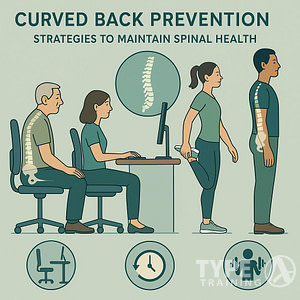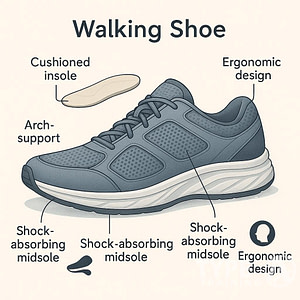Running twice a day can supercharge your fitness journey and unlock new levels of athletic performance. Many elite runners and dedicated amateurs have discovered the advantages of splitting their daily mileage into two sessions.
This approach allows your body to adapt to increased training volume while minimizing the risk of overuse injuries. You’ll experience improved fat burning as your metabolism stays elevated throughout the day. Double runs also offer mental benefits, providing two daily opportunities to clear your mind and reduce stress.
Embracing twice-daily runs can help you break through plateaus and achieve your running goals faster. Whether you’re training for a marathon or simply aiming to improve your health, this method can accelerate your progress and make running an even more integral part of your lifestyle.
Popular posts:
Key Takeaways
- Running twice daily enhances endurance and speed more effectively than single runs
- Double runs elevate metabolism and improve fat burning throughout the day
- This approach can accelerate progress towards running goals while minimizing injury risk
Understanding the Basics of Running Twice a Day
Running twice a day, known as “doubles,” can significantly boost your training volume and performance. This approach involves strategic planning and careful execution to maximize benefits while minimizing injury risks.
Defining Doubles in Running
Doubles refer to completing two separate running sessions in a single day. These sessions are typically spaced several hours apart, allowing for recovery between efforts.
The first run is often done in the morning, while the second takes place in the evening or late afternoon. Each session can vary in intensity and duration, depending on your training goals.
Doubles are commonly used by advanced runners to increase weekly mileage without overly long single sessions. This method can help improve endurance, speed, and overall fitness.
The Role of Mileage in Running Performance
Increased mileage is a key factor in enhancing running performance. Higher weekly mileage can lead to improved aerobic capacity, better running economy, and enhanced endurance.
By incorporating doubles, you can safely increase your total weekly mileage. This approach allows for more frequent, shorter runs, which can be less taxing on your body compared to a single long run.
Regular high-mileage training stimulates physiological adaptations. These include increased mitochondrial density, improved fat metabolism, and enhanced capillarization in muscles.
Typical Structure of Double Runs
A common structure for double runs includes an easy-paced morning run followed by a more intense afternoon or evening session. The morning run serves as a warm-up for the day and adds extra mileage.
The second run can focus on specific training goals, such as tempo runs, intervals, or hill workouts. This approach allows you to tackle high-quality training when your body is fully awake and prepared.
Recovery between sessions is crucial. Proper nutrition, hydration, and rest should be prioritized to ensure you’re ready for the second run of the day.
Physical Health Benefits
Running twice a day offers significant physical health advantages. This training approach enhances cardiovascular fitness, aids in weight management, and strengthens muscles and joints.
Enhanced Cardiovascular Fitness
Running twice daily boosts your cardiovascular system’s efficiency. Your heart becomes stronger, pumping more blood with each beat. This increased blood flow improves oxygen delivery to muscles and organs.
Regular double runs enhance your endurance. You’ll notice improved stamina during daily activities and other sports. Your resting heart rate may decrease, indicating better overall cardiovascular health.
Twice-daily runs also help lower
Weight Management and Loss
Incorporating two runs into your day accelerates calorie burn. This increased energy expenditure aids in weight loss and maintenance.
Your metabolism gets a double boost, continuing to burn calories even after you’ve finished running. This effect, known as excess post-exercise oxygen consumption (EPOC), is more pronounced with twice-daily runs.
Running twice a day can help regulate appetite hormones. You may find it easier to stick to a balanced diet, supporting your weight management goals.
Strengthening Muscles and Joints
Two daily runs provide more opportunities to build muscle strength. Your leg muscles, including quadriceps, hamstrings, and calves, benefit from this increased workout frequency.
Running also strengthens the muscles supporting your joints. This added strength can improve joint stability and reduce the risk of injuries.
Bone density improves with regular running. The impact forces stimulate bone growth, potentially lowering the risk of osteoporosis later in life.
Core muscles engage during runs, leading to improved overall body strength and posture. This can have positive effects on your daily activities and other physical pursuits.
Recovery and Injury Prevention
Running twice a day requires careful attention to recovery and injury prevention. Proper strategies can enhance performance and reduce the risk of overtraining.
Importance of Recovery in Training
Recovery is crucial when running twice daily. It allows your body to repair muscle tissue, replenish energy stores, and adapt to training stress. Without adequate recovery, you risk fatigue, decreased performance, and potential injury.
Proper nutrition plays a key role in recovery. Consume a balanced meal with carbohydrates and protein within 30 minutes after each run. Stay hydrated throughout the day to support muscle repair and overall bodily functions.
Quality sleep is essential for recovery. Aim for 7-9 hours of sleep nightly to allow your body to fully regenerate. Consider short naps between runs if your schedule permits.
Reducing the Risk of Injury Through Proper Training
To minimize injury risk when running twice daily, gradually increase your training volume. Start with one easy run and one moderate run per day, slowly building intensity and duration over weeks.
Incorporate strength training to support your running. Focus on exercises that target your core, hips, and legs. This helps improve running form and reduces the risk of overuse injuries.
Proper warm-up and cool-down routines are essential. Spend 5-10 minutes doing dynamic stretches before each run. After running, perform static stretches to maintain flexibility and reduce muscle tension.
Role of Rest Days in Recovery
Rest days are vital when running twice daily. They allow your body to fully recover and adapt to training stress. Aim for at least one full rest day per week, with no running or intense physical activity.
On rest days, engage in light activities like walking or gentle yoga to promote blood flow and aid recovery. Use this time to focus on mental relaxation and stress reduction.
Consider incorporating active recovery days. These involve low-intensity exercise that promotes blood flow without adding significant stress to your body.
Strategies for Efficient Recovery
Compression gear can aid recovery by improving blood circulation. Wear compression socks or tights during or after runs to reduce muscle soreness and swelling.
Ice baths or contrast therapy can help reduce inflammation and speed up recovery. Alternate between cold and warm water to stimulate blood flow and reduce muscle soreness.
Foam rolling and massage are effective for releasing muscle tension. Spend 10-15 minutes foam rolling after each run, focusing on tight areas. Consider regular sports massages to address deeper muscle knots.
Proper hydration is crucial for recovery. Drink water throughout the day and consider electrolyte drinks for longer runs to replenish lost minerals.
Performance Improvement Strategies
Enhancing running performance requires a multifaceted approach. Increasing mileage, incorporating speed workouts, and adding variety to your training can significantly boost your capabilities.
Building Endurance Through Increased Mileage
Gradually increasing your weekly mileage is key to building endurance. Start by adding 10% to your total weekly distance. This gradual increase allows your body to adapt without risking injury.
Long runs are crucial for endurance. Aim to include one weekly run that’s 20-30% of your total weekly mileage. These extended efforts improve your aerobic capacity and teach your body to use fat as fuel more efficiently.
Consider splitting some of your daily runs into two sessions. This strategy can help you increase overall mileage while reducing the stress on your body. Remember to maintain proper recovery between runs to prevent overtraining.
Speed Workouts and Running Economy
Incorporating speed workouts can significantly improve your running economy. These sessions teach your body to run more efficiently at faster paces.
Try fartlek training, alternating between fast and slow paces during a run. This improves your ability to change speeds and boosts overall performance.
Hill repeats are another effective speed workout. Find a moderate hill and sprint up for 30-60 seconds, then jog back down. Repeat 6-10 times. This builds leg strength and power, translating to faster flat-ground running.
Incorporating Interval and Tempo Runs
Interval training is a powerful tool for improving speed and VO2 max. Start with 400m repeats at 5K race pace with equal recovery time. Gradually increase the distance and decrease recovery as you progress.
Tempo runs help you sustain a challenging pace for longer periods. Begin with 20 minutes at a “comfortably hard” pace, just below your lactate threshold. Gradually extend the duration as your fitness improves.
Mix intervals and tempo runs into your weekly schedule. This variety challenges your body in different ways, leading to comprehensive performance gains.
Psychological and Physiological Advantages
Running twice daily offers significant mental and bodily benefits. Your mind and body respond positively to this increased exercise regimen in several key ways.
Boosting Mental Health and Stress Relief
Running releases endorphins, your body’s natural mood elevators. By running twice a day, you double your opportunities for these “feel-good” chemicals. This can lead to improved mental clarity and reduced stress levels.
You may notice enhanced focus and productivity throughout your day. The regular exercise can help regulate your sleep patterns, leading to better rest and recovery.
Running also provides valuable time for self-reflection or meditation. This can contribute to improved emotional well-being and a more positive outlook on life.
Biological Responses to Frequent Running
Your body adapts quickly to increased running frequency. You’ll likely experience a boost in your overall fitness level as your cardiovascular system becomes more efficient.
Human Growth Hormone (HGH) production increases with intense exercise. Running twice daily can stimulate more HGH release, potentially aiding in muscle growth and repair.
Your muscle cells develop more mitochondria, the powerhouses that generate energy. This leads to improved endurance and faster recovery between runs.
Enzyme activity in your muscles increases, enhancing your body’s ability to use fat for fuel. This can result in improved body composition over time.
Training Approaches for Advanced Runners
Advanced runners require specialized training methods to continue improving performance and endurance. Tailoring workouts to experience level and race goals is crucial for optimal results.
Differences in Training for Experienced Versus Novice Runners
Experienced runners can handle higher weekly mileage and more intense workouts. You’ll typically run 50-100 miles per week, compared to 20-40 for beginners. Your training should include:
- Speed work: Intervals, fartleks, and tempo runs
- Long runs: Up to 20-22 miles for marathon training
- Recovery runs: Easy-paced sessions between hard workouts
Elite runners often incorporate twice-daily runs to boost mileage without overstraining. You’ll need to focus on proper nutrition and recovery to support this increased training load.
Optimizing Training for Marathons and Long-Distance Races
Marathon and long-distance training requires building a strong aerobic base. Your strategy should emphasize:
- Progressive long runs
- Marathon-paced tempo runs
- Goal pace workouts
Incorporate specific workouts like:
- 2×6 miles at marathon pace
- 3×3 miles at half-marathon pace
- 10-mile progression runs
Taper your training 2-3 weeks before race day to ensure peak performance. Balance hard efforts with easy runs and rest days to prevent burnout and injury.
Lifestyle Considerations and Tips
Incorporating twice-daily runs requires careful planning and attention to key lifestyle factors. Proper balance, nutrition, and gear selection are essential for success and injury prevention.
Balancing Running with Other Forms of Exercise
Integrating cycling into your routine can complement your running regimen. Cycling provides a low-impact cardio workout, helping to maintain fitness while reducing stress on your joints. Aim for 1-2 cycling sessions per week, replacing or supplementing shorter runs.
Strength training is crucial for injury prevention and improved running economy. Schedule 2-3 strength sessions weekly, focusing on core stability, leg strength, and upper body conditioning. This balanced approach will enhance your overall fitness and running performance.
Remember to include rest days in your schedule. These allow your body to recover and adapt to the increased training load. Aim for at least one full rest day per week, engaging in gentle activities like yoga or stretching.
Nutrition and Hydration for Double Sessions
Proper fueling is vital when running twice daily. Consume a balanced meal 2-3 hours before your first run, including complex carbohydrates and lean protein. For your second run, have a light snack 30-60 minutes prior.
Post-run nutrition is equally important. Eat a mix of carbohydrates and protein within 30 minutes after each session to replenish energy stores and aid muscle recovery. This approach helps maintain your resting metabolic rate and supports overall health.
Hydration is critical. Drink water throughout the day and during runs lasting over 60 minutes. For longer runs, consider sports drinks to replenish electrolytes. Monitor your urine color – it should be pale yellow, indicating proper hydration.
Choosing the Right Gear and Running Shoes
Invest in high-quality running shoes suited to your foot type and running style. Replace them every 400-500 miles to ensure proper support and cushioning. Consider rotating between two pairs to extend their lifespan and provide varied support.
Moisture-wicking clothing is essential for comfort during double sessions. Choose breathable fabrics that help regulate body temperature and prevent chafing. Invest in reflective gear for early morning or evening runs to enhance visibility.
A GPS watch or smartphone app can help track your progress and maintain your desired pace. Aim for a conversational pace on easy runs to build endurance without overexertion. This approach allows for sustainable training and reduces injury risk.
Potential Drawbacks to Running Twice a Day
Running twice daily can strain your body and mind if not approached carefully. It’s crucial to be aware of the risks and manage your training wisely.
Identifying Signs of Overtraining
Pay attention to your body’s signals. Persistent fatigue, decreased performance, and frequent illnesses may indicate overtraining. Monitor your resting heart rate – an elevated rate could be a warning sign.
Mood changes like irritability or loss of motivation are common in overtrained athletes. Track your sleep quality and appetite; disruptions in these areas often accompany overtraining.
If you experience prolonged muscle soreness or recurring injuries, it’s time to reassess your training load. Listen to your body and adjust your schedule accordingly.
Balancing Intensity to Avoid Hindering Recovery
Running twice a day leaves less time for recovery between sessions. This can impair muscle repair and adaptation, potentially slowing your progress.
To mitigate this, vary the intensity of your runs. Combine a hard morning session with an easy evening jog, or vice versa. This approach allows for some recovery while maintaining training volume.
Proper nutrition becomes even more critical with two-a-days. Fuel your body adequately and time your meals to support recovery between runs.
Consider incorporating active recovery techniques like stretching or light cross-training on rest days to promote healing without additional stress.
Understanding the Risk of Burnout
Mental fatigue can set in quickly with twice-daily runs. The constant focus on training may lead to psychological burnout, affecting your motivation and enjoyment of running.
Set realistic goals and don’t push yourself too hard, too often. It’s essential to maintain a balance between running and other aspects of your life.
Take regular breaks from intense training cycles. Incorporate variety into your routine with different routes, terrains, or running partners to keep things fresh and engaging.
Be mindful of your mental state. If you start dreading your runs or feel overwhelmed, it might be time to scale back and reassess your training plan.
Incorporating Strength Training and Cross-Training
Strength training and cross-training complement your running routine, enhancing performance and reducing injury risk. These practices build overall fitness and provide variety to your training regimen.
Benefits of Strength Training for Runners
Strength training boosts your running performance by increasing power and efficiency. It targets key muscle groups, improving your form and reducing fatigue during long runs.
Regular strength work enhances bone density and joint stability, crucial for injury prevention. You’ll develop a stronger core, leading to better posture and more efficient breathing while running.
Resistance exercises help correct muscle imbalances common in runners. This balanced strength contributes to smoother, more economical running mechanics.
Incorporate strength training 2-3 times per week, focusing on exercises like squats, lunges, and deadlifts. Include upper body work to maintain overall muscular balance.
The Role of Cross-Training in Overall Fitness
Cross-training activities like swimming, cycling, or yoga diversify your fitness routine. They work different muscle groups, preventing overuse injuries common in high-mileage runners.
These activities maintain cardiovascular fitness on recovery days, allowing you to stay active without the impact of running. Cross-training helps you avoid burnout and keeps your workouts fresh and engaging.
Low-impact options like elliptical machines or rowing provide effective cardio while giving your joints a break. This is especially beneficial when recovering from minor injuries or during high-intensity training phases.
Your running coach can help you select cross-training activities that complement your fitness goals. Aim for 1-2 cross-training sessions per week, adjusting based on your running volume and fitness levels.
Frequently Asked Questions
Running twice a day can offer various benefits for fitness and health. Let’s address some common questions about this training approach.
What are the potential weight loss advantages of running twice a day?
Running twice daily can boost your calorie burn significantly. You may experience an increased metabolic rate that lasts longer throughout the day. This can lead to more efficient fat burning and accelerated weight loss results.
How can running twice daily contribute to endurance improvement?
Doubling your runs can rapidly build endurance. Your body adapts to the increased training volume, improving cardiovascular fitness and muscular stamina. You may notice faster progress in your ability to run longer distances without fatigue.
What are the specific benefits for beginners who choose to run twice a day?
As a beginner, running twice daily can fast-track your fitness gains. You’ll develop proper running form more quickly through increased practice.
Your body will adapt faster to the demands of running, potentially reducing initial discomfort and soreness.
Can running twice a day lead to different physical transformations in your body?
Yes, running twice daily can accelerate physical changes. You may notice more rapid toning of leg muscles and improvements in overall body composition.
Your posture might improve faster due to strengthened core muscles from increased running volume.
Is it advisable to run both in the morning and evening, and what are the implications?
Running in the morning and evening can be beneficial. Morning runs can boost your metabolism for the day ahead.
Evening runs can help relieve stress and improve sleep quality. This schedule allows for better recovery time between sessions.
Are there any risks associated with running twice a day for overall health?
Running twice daily does carry some risks. You may face an increased chance of overuse injuries if you don’t allow proper recovery time.
Fatigue can accumulate more quickly, potentially impacting your immune system if you’re not careful with nutrition and rest.
















